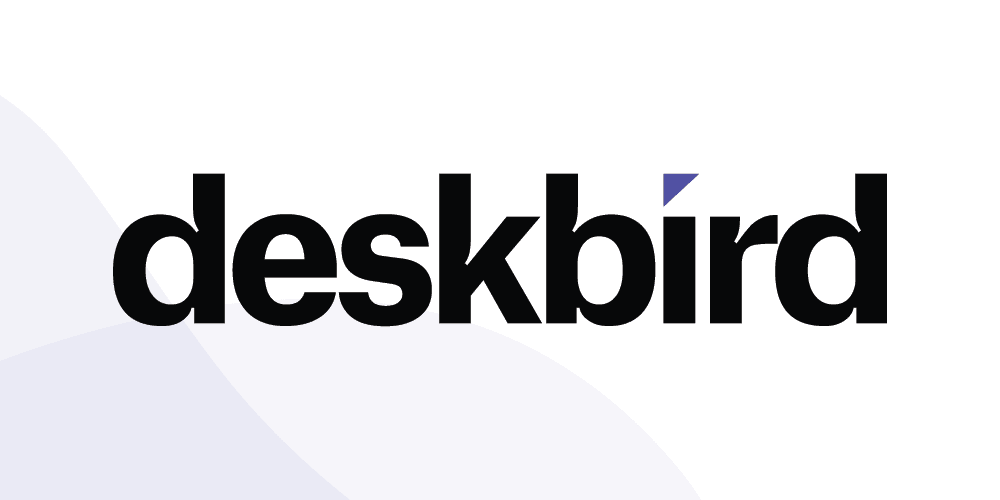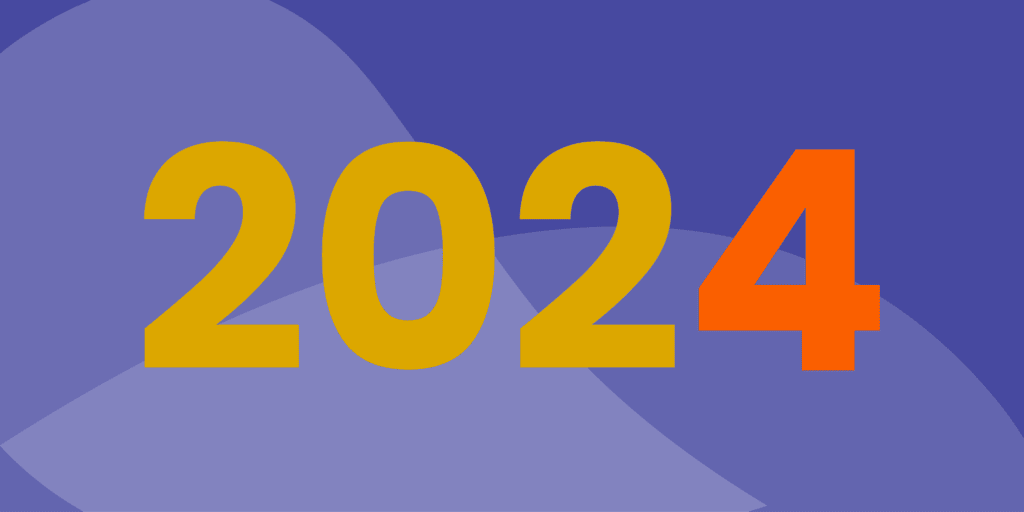Our Take on Hybrid Work Challenges

If there’s one thing to do before implementing a company hybrid work policy, it’s this: learn everything there is about the different types of hybrid work modes, how they impact corporate culture and employee relationships, which design changes are to be brought to the office and digital spaces of remote employees, and so much more. However, let’s not get discouraged by the amount of knowledge that needs to be processed.
“Hybrid work,” or “flexible work,” is a complicated term that has many scratching their heads. For some, it is an encompassing paradigm that gets professions redesigned. Yet for most, hybrid work is simply a combination of working from home and/or the office. One day, an employee might work from home, the next one, from a café or a co-working space nearby, and, another day, from the company office. The hybrid work model might be strict in some companies and more flexible in others.
No matter the actual model, companies are switching to hybrid for practical reasons like cutting costs or for strategic goals, e.g., to become a liberated company. But, on their way toward a working hybrid model, they make mistakes and face challenges that give others so much to learn from. So, today, let’s break them down and see how to build a sustainable hybrid model and predict the needs of teams.
Let’s Face the Challenges of Hybrid Work
We will address two sets of hybrid work challenges simultaneously. How do we build a hybrid team? What process do we use to organize a hybrid office?
They are two sides of the same coin, intertwined and dependent on one another. As such, we will address them together, one after the other. First, let’s talk about the challenges of managing a hybrid team.
Communicating about Hybrid
The world of hybrid work is diverse, and there are many ways to implement it. So it might become challenging for HR specialists to convey the exact version that the executive suite has landed on and/or the need to switch to hybrid.
In general, people will respond differently to a flexible work environment. Some people will be suspicious of hybrid because they have had enough issues with remote working in the past and don’t want to face it again; others will embrace hybrid as an opportunity to have a better work/life balance. And, if not appropriately communicated, a hybrid model might bring rejections to switching or quitting.
First and foremost, remember that good communication is a two-way street. When you talk about the possible changes with your team, they talk with you, too. Listen to what teams have to say about remote work, office design, and their personal goals and family situations. This is best done before, during, and after implementing a hybrid strategy. Use this data wisely.
Additionally, as a leader, you have to figure out why exactly you’re going hybrid and be honest about that with your team. Implementing a hybrid work model can cut costs for companies, raise productivity, help build highly collaborative teams, and bring innovation. Yet, no matter the actual reason, you have to be crystal clear about it with your team.
Lastly, make sure you have the transition planned and that your team knows how it will roll out. Be transparent about it. Communicating about the change to your team and the exact process that will take place is vital in ensuring there will be no misunderstandings, no shock, and no feeling of being abandoned. Instead, your team will feel that you are working together with them to make things better.
Managing the Equal Participation in a Hybrid Team
When you have a hybrid team, you must ensure all your employees contribute. No matter if an employee works from home or the office, you still need to provide them with a sense of belonging. You want to make sure that everybody feels involved.
The best bad example of this is “the dreaded conference call,” and we cannot describe it better than Kevin Eikenberry and Wayne Turmel: imagine part of your team on a conference call and some people in a room in the office. Those in a room are in a lively discussion, and those on a call are hardly managing to get a word in, usually with a few seconds delay if not disconnecting from time to time. Anyone has experienced such a disaster of a call at least once.
Among the general frustration and lack of productivity, such an example also highlights another common problem: unequal participation. A conference call like this is a considerable challenge for underrepresented groups, who already have trouble getting their voices heard. The mismatch of productive and passive groups leads to miscommunication and a lack of crucial ideas. You don’t want to face this challenge in your company once you go hybrid.
So, how do you manage this?
First, organize company meetings in a way they are actually effective. That includes conference calls, as well as in-person meetings. Make sure the goal of each meeting is represented in its format and location. For example, it doesn’t make sense to organize a lively brainstorming session online, just as it’s not efficient to have somebody’s general report or presentation made in the office. Such intricate planning also requires good knowledge of your employees.
Next, make sure everyone can speak up, ask questions and get a chance to be heard. Check if you communicate with your employees in a way they are comfortable with. They might have their personal preferences for team collaboration. Learn and consider them, and watch the company’s productivity grow.
Lastly, facilitate a sense of belonging, no matter how your team is distributed. Let your employees know that everyone is an essential part of the team and that you care about their opinions and work. You want your team members to feel like their work is important no matter where and how they work.
Keeping a Hybrid Team Creative and Collaborative
It’s not that hybrid work leads to less communication; new approaches must be adopted to build team communication efficiently. Good communication leads to increased collaboration and creativity. For employees of all generations, collaboration is the top 1 reason to come to the office, as Gensler’s 2021 study found. Yet, for many organizations, it might be a challenge to nurture collaboration and creativity in a hybrid mode, in teams dispersed between the office and working from home.
Let’s start by asking: what exactly motivates the team to do exceptional work, share openly with colleagues, and propose solutions developed jointly? Sure, part of the answer lies in employees and their soft skills, yet as an employer, you can create safe spaces – both physical and digital – that bring out the talents within your team.
One thing to consider with the creative process in the office is how and when teammates search for ideas when they feel stuck. This article from Frontiers in Human Neuroscience, being interesting on its own, mentions how surroundings impact an idea’s “incubation” period. Incubation is the time people need to *not* think about the given task consciously to reach that sudden inspiration or solution.
It’s essential to give employees space to let their minds wander and don’t feel pressured to show active engagement. Creating surroundings that inspire people with colors, form, and patterns is equally important. If manual activities like fußball or darts are available, people will use those when they need to think and develop an idea.
Such an approach indeed requires excellent trust. Yet, such trust develops with good communication and building strong interpersonal relationships.
Then, there’s the challenge of less frequent casual communication among colleagues who are miles away every second day. The fun and valuable “digesting” of a just-finished work meeting with a best mate by the coffee machine is partly lost with hybrid work. Only partially because there are other ways to keep your team tight.
People value interpersonal communication at work: for new hires, it’s a vital way to learn and get used to a new job; for oldies, it’s part of a creative process and their social life. They discuss their ideas within the then-current project and get to know each other’s strengths, dislikes, and quirks.
This is why all your employees should feel comfortable sharing their good and bad ideas. Whether a group chat, a casual call, or an occasional walk-by talk, it should be a place where they can get to know their colleagues through their work and work through their relationships. In other words, you want to create a place where they feel safe to share and can have healthy, productive debates and brainstorm.
For those who occasionally have to join meetings remotely, this will be a lifesaver.
The Unimaginable: Hybrid Onboarding
Onboarding is an essential and challenging process for employees and employers: you must adjust your new hire and present the company’s vision and mission simultaneously. We can minimize the negative aspects of the onboarding experience by using technology to our advantage, still, though, many find the process not flexible enough.
The 2021 Survey by PwC stated that over 30% of employees say onboarding new hires is worse than pre-COVID. It’s easy to see how it turned this way: the pandemic has put everything on its head, and economic uncertainty doesn’t help.
The top difficulties we see with hybrid onboarding are lack of “shadowing”: managers not participating due to stress and lack of time, and setting confusing goals and tasks. The good news is that the industry is moving in the right direction and is identifying the need to improve onboarding with an emphasis on “hybrid.”
Here are some tips for doing onboarding right when employees work remotely:
- Have clear goals and tasks with a flexible but well-defined onboarding plan
- Find managers who are willing to set aside time for onboarding
- Use technology to your advantage by creating communication channels
- Make sure your onboarding process is harmonized across company departments
- Consider personal advisory services based on employee preferences
- Provide continuous feedback for continuous improvements
As we know, onboarding starts even before a fresh employee’s first day. Luckily, for a pre-onboarding period, a flexible work model comes naturally: tons of documentation is better processed working from home, while lively introduction sessions are best set in the office. Therefore, any hybrid approach you use constantly can be introduced here. Moreover, this will help a new hire to build reasonable expectations of how your team communicates remotely and how productive remote work within the company is.
Last but not least, treat hybrid onboarding just as you do hybrid work: for each task, exists its own environment. For example, have employees and new hires in the office for tasks requiring collaboration and communication and let them roam freely for individual tasks involving concentration. This will foster trust in your approaches to managing the company workflow.
Hybrid Team Scheduling Conflicts
This is a challenge that comes with people who are working in different physical spaces. When you have a hybrid team, it’s common for multiple people to book the same time for a conference room for a meeting or open space for teamwork; what’s called double booking. Make sure your employees know that this might happen from time to time. However, remember that they might get frustrated if they have to deal with scheduling conflicts constantly.
Better yet, you need to have a way to avoid double booking. Various digital tools, free and paid, can help you keep everything clear and straightforward. Not only can you see the time slots booked for each work desk or conference room, but also the employee schedules, their in-office and WFH days, vacations, business trips, etc. Scheduling software will help them avoid scheduling conflicts: last-minute call-outs, or booking employees on holiday or busy with other assigned tasks.
Finding the right digital tool might be a challenge in itself. Yet, with proper planning and communication with a team, figure answers to these questions:
- How many employees does our company have?
- How many of them are working in a hybrid mode?
- Do our employees choose in-office days freely, or are they required to come in on specific days?
- Do we practice hot desking?
- What’s the percentage of workspaces that don’t need prior booking?
- How often do our teams travel for work?
- Are we ready to pay for professional and exhaustive software to cover the office and workplace management?
Each company’s flows are different, and each set of answers will vary significantly from the other. That’s just another reason to pick a tool to solve hybrid office problems before they have a chance to reveal themselves.
Managing a Hybrid Office: Storage Options and Snacks
Well-designed office space is not only pleasing to the eye but functional and balanced in matching the work environment to the type of work. It optimizes time and effort for people and essentially becomes a place where employees want to return again and again to be the most productive. So when it comes to designing and maintaining a hybrid office, it’s essential to keep in mind the small, and not so small, peculiarities of this approach.
For instance, if your team works from home on some days, the purpose of personal work desks diminishes. You might opt in for hot desking or desk hoteling to optimize space and costs, and the desks would have to get cleaned and decluttered as many people will use them at different times. Our article on hot desking pros and cons goes deeper into this.
Still, people have things they need to store specifically in the office: work documents, professional literature, tools and electronics, and a beloved plushy from an inspiring trip. You can’t deprive people of that. So, for this, various storage options are available.
For example, bookshelves, file cabinets, lockers, or cubbies can be used. Use rolling ones for maximum mobility, but don’t overdo it. The thing is, we aren’t trying to switch from cluttered personal desks to cluttered office spaces filled with multiple rolling cabinets. Mix and match different storage options, and opt for sleek designs that inspire teams using them every day.
The other thing that expands employee experience but might seem surprising is that people miss office snacks, as the editor-in-chief of Quartz figured. They just don’t taste like home snacks that one would buy for themselves. And the associations they bring with a buzzing office and jokes with colleagues are priceless.
Get Open-minded about your own Hybrid Work Challenges
Communicating properly about the hybrid model, ensuring equal participation and collaboration, and building a reliable hybrid office management system are the things you want to do right. You’ll know everything works well when your team buzzes with ideas, collaboration, and inspiration, and the company succeeds.
Yet, every team is different, and unexpected challenges might arise with your implementation of a hybrid model. Take them seriously, but with an open mind. Remember: every challenge here is a mistake made by some other team under demanding pandemic circumstances.
As Albert Einstein said, “Anyone who has never made a mistake has never tried anything new.” Aren’t we making something new here now?

Halyna OSADCHA
Guest Writer, a Hybrid Work Devotee.




